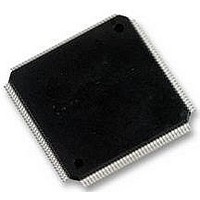LPC2292FBD144 NXP Semiconductors, LPC2292FBD144 Datasheet - Page 24

LPC2292FBD144
Manufacturer Part Number
LPC2292FBD144
Description
16/32BIT ARM7 MCU, 256K FLASH, 144LQFP
Manufacturer
NXP Semiconductors
Datasheet
1.LPC2292FBD144.pdf
(53 pages)
Specifications of LPC2292FBD144
No. Of I/o's
112
Ram Memory Size
16KB
Cpu Speed
60MHz
No. Of Timers
2
No. Of Pwm Channels
6
Digital Ic Case
RoHS Compliant
Core Size
32bit
Program Memory Size
256KB
Oscillator Type
External Only
Controller Family/series
LPC22xx
Rohs Compliant
Yes
Available stocks
Company
Part Number
Manufacturer
Quantity
Price
Company:
Part Number:
LPC2292FBD144
Manufacturer:
NXP
Quantity:
5 000
Company:
Part Number:
LPC2292FBD144
Manufacturer:
NXP
Quantity:
2
Part Number:
LPC2292FBD144
Manufacturer:
PHILIPS/飞利浦
Quantity:
20 000
Company:
Part Number:
LPC2292FBD144,551
Manufacturer:
NXP Semiconductors
Quantity:
10 000
Part Number:
LPC2292FBD144/00
Manufacturer:
NXP/恩智浦
Quantity:
20 000
Company:
Part Number:
LPC2292FBD144/01
Manufacturer:
NXP
Quantity:
5 000
Company:
Part Number:
LPC2292FBD144/01
Manufacturer:
NXP
Quantity:
2 000
Company:
Part Number:
LPC2292FBD144/01
Manufacturer:
NXP
Quantity:
3
Company:
Part Number:
LPC2292FBD144/01,5
Manufacturer:
NXP Semiconductors
Quantity:
10 000
NXP Semiconductors
LPC2292_2294_7
Product data sheet
6.18.1 Features
6.18 Pulse width modulator
The PWM is based on the standard Timer block and inherits all of its features, although
only the PWM function is pinned out on the LPC2292/LPC2294. The Timer is designed to
count cycles of the peripheral clock (PCLK) and optionally generate interrupts or perform
other actions when specified timer values occur, based on seven match registers. The
PWM function is also based on match register events.
The ability to separately control rising and falling edge locations allows the PWM to be
used for more applications. For instance, multi-phase motor control typically requires three
non-overlapping PWM outputs with individual control of all three pulse widths and
positions.
Two match registers can be used to provide a single edge controlled PWM output. One
match register (MR0) controls the PWM cycle rate, by resetting the count upon match.
The other match register controls the PWM edge position. Additional single edge
controlled PWM outputs require only one match register each, since the repetition rate is
the same for all PWM outputs. Multiple single edge controlled PWM outputs will all have a
rising edge at the beginning of each PWM cycle, when an MR0 match occurs.
Three match registers can be used to provide a PWM output with both edges controlled.
Again, the MR0 match register controls the PWM cycle rate. The other match registers
control the two PWM edge positions. Additional double edge controlled PWM outputs
require only two match registers each, since the repetition rate is the same for all PWM
outputs.
With double edge controlled PWM outputs, specific match registers control the rising and
falling edge of the output. This allows both positive going PWM pulses (when the rising
edge occurs prior to the falling edge), and negative going PWM pulses (when the falling
edge occurs prior to the rising edge).
•
•
•
•
•
Seven match registers allow up to six single edge controlled or three double edge
controlled PWM outputs, or a mix of both types.
The match registers also allow:
– Continuous operation with optional interrupt generation on match.
– Stop timer on match with optional interrupt generation.
– Reset timer on match with optional interrupt generation.
Supports single edge controlled and/or double edge controlled PWM outputs. Single
edge controlled PWM outputs all go HIGH at the beginning of each cycle unless the
output is a constant LOW. Double edge controlled PWM outputs can have either edge
occur at any position within a cycle. This allows for both positive going and negative
going pulses.
Pulse period and width can be any number of timer counts. This allows complete
flexibility in the trade-off between resolution and repetition rate. All PWM outputs will
occur at the same repetition rate.
Double edge controlled PWM outputs can be programmed to be either positive going
or negative going pulses.
Rev. 7 — 4 December 2008
16/32-bit ARM microcontrollers with external memory interface
LPC2292/LPC2294
© NXP B.V. 2008. All rights reserved.
24 of 53
















